are mourning doves monogamous
The female incubates the chick from the afternoon to the morning. These doves are monogamous and form strong pair bonds.

Do Doves Mate For Life Animals African Animals Mourning Dove
Also known as turtle doves mourning doves are monogamous and often mate for life.

. Another name for them is turtle doves So small wonder that the author of the favorite Christmas song kept them as a pair. It is one of the most abundant and widespread of all North American birds and a popular gamebird with more than 20 million. A graceful slender-tailed small-headed dove thats common across the continent.
Besides a mourning dove in a pear tree just doesnt sound right. Males and females are similar in appearance. Mourning doves are almost invariably monogamous Stewart and Mackey 1954 Laub 1956 Jackson 1963 Brackbill 1970 Blockstein 1986a.
INaturalist Unlike humans mourning doves dont need freshwater to survive. They are primarily seed eaters rather than insect eaters. What are the mating habits of Mourning Dove.
Mourning doves are seasonally monogamous and may pair up again in subsequent breeding seasons. The mournful cooing of the Mourning Dove is one of our most familiar bird sounds. The mourning dove Zenaida macroura is a member of the dove family Columbidae.
Male walks towards female or. These birds are serially monogamous and some pairs will stay together. They tend to form really strong bonds in pairs that can even extend beyond death.
Mourning Doves are light grey and brown and generally muted in color. The male incubates from the morning to the afternoon. The socially monogamous male will defend the nest and feed the female while she incubates and even helps feed the chicks after hatching.
Mating pairs are monogamous and often mate for life. Seeing a pair of mourning doves nestled together almost cuddling is one of the cutest and most common sights in bird watching. Both parents incubate and care for the young.
Monogamous bird pairs mate and share the responsibilities of. Mourning Dove is a warm-coloured cinnamon-brownish dove with a long graduated tail. Also Western USA has seen the population decline due to lead poisoning.
The species is generally monogamous with two squabs young per brood. Both sexes incubate the chick. The female dove builds the nest with the male flying about gathering material and bringing it to her.
They are monogamous and they have an elaborated courtship display. Mourning doves are quite muted in colour being a light grey to earthy brown. However doves are monogamous while they are together.
Mourning Doves eat almost exclusively seeds but the young are fed crop milk by their parents. Because of this monogamous relationship they have come to be known as a symbol of love in many Native American cultures. Their flight is fast and bullet straight.
Mourning doves eat in the open on the ground pecking or pushing aside ground litter but they do not scratch at the ground. When taking off their wings make a sharp whistling or whinnying. Two white eggs are laid in a flimsy assembly of pine needles twigs and grass stems usually built in a low bush or tree or on the ground.
Mourning doves are monogamous and some of these pairs remain together throughout the winter. Usually these diurnal birds forage in small groups or pairs and feed quickly filling their crop with seeds to digest later on a safe perch. On the ground we can see large blackish spots on inner greater coverts and tertials and small black mark on neck-side.
Both males and females are similar in appearance compared to other breeds that can vary greatly between sexes. These birds are monogamous in nature. Incubation takes two weeks.
Evolution through natural selection has molded strong intricate pair bonds that favor an obligate paternal investment that increases the survival of the species Laub 1968 Wittenberger 1979 and Tilson 1980. From southern Canada to central Mexico this is one of our most common birds often abundant in open country and along roadsides. Mourning Doves are loyal birds some pairs stay together through the entire breeding season and some are monogamous which means that they will stay with the same mate their whole life.
Doves are devoted parents. The female usually lays two eggs. In 40 states approximately 20 million mourning doves are hunted and about 40-70 million are shot dead each year by the hunters.
They in fact re monogamous creatures and they do indeed mate for life they will even typically remain with one another through cold winter months. The bird is also known as the American mourning dove the rain dove and colloquially as the turtle dove and was once known as the Carolina pigeon and Carolina turtledove. Mourning Doves perch on telephone wires and forage for seeds on the ground.
European settlement of the continent with its opening of the forest probably helped this species to increase. Tribes such as the Aztecs and Mexican Indian tribes associated the dove with. The mourning dove is also known as the turtle dove American mourning dove Carolina pigeon Carolina turtle dove and rain dove.
Mating pairs are monogamous when partnered up and in the vast majority of cases these. A recent study was conducted to see if they do actually mate for life. Can you eat collared doves.
Like a number of other bird species like scarlet macaws whooping cranes and mute swans the mourning dove mates for life. Difference between monogamy and mating for life. Their soft drawn-out calls sound like laments.
Do Mourning Doves mate for life. The mourning dove a bird commonly seen throughout the world frequently makes an entrance into culture stories legends and belief systems. It also helps itself by breeding prolifically.
They are usually around a foot in length and weigh somewhere between 4 to 6 pounds. Its fairly common to see two mourning doves cuddling with each other. The Mourning Dove is monogamous and forms strong pair bonds.
The species is generally monogamous and produces two young squabs per brood. Tail is dark brown with pointed tip. The answer is yes they are edible but they have a slightly bitter edge to the taste i have eaten the breasts but was not impressed at all a good masking of herbs or wine maybe casseroled in a spicy stock may counteract this.

Mourning Dove Pet Birds Cute Animals Animals Beautiful

A Pair Of Mourning Dove Aka Zenaida Macroura Having Some Intimate Moments Stock Photo Alamy In 2022 Mourning Dove Stock Photos Photo

11 Animals That Mate For Life Mourning Dove Animals Mourning Dove Babies
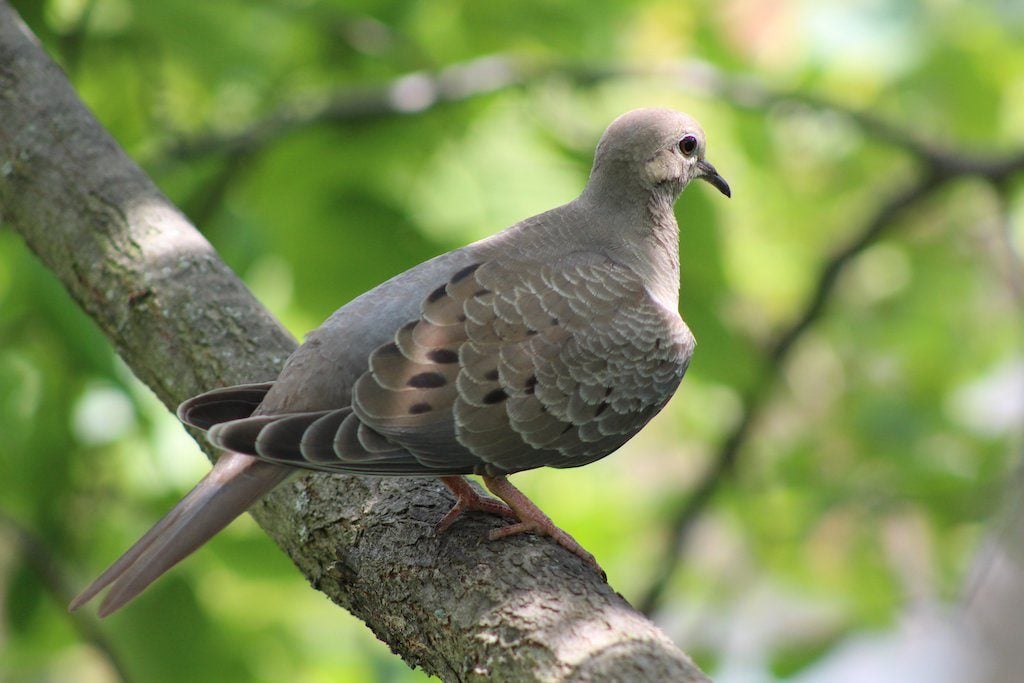
13 Fascinating Facts About Mourning Doves Birds Blooms

Love Dove Mourning Birds Romancing Amidst The Shape Of A Valentine Heart No 1001 A Fine Art Bird Photograph Mourning Dove Dove Bird Birds

Beautiful Dove Zenaida Macroura Arte De Aves Aves Exoticas
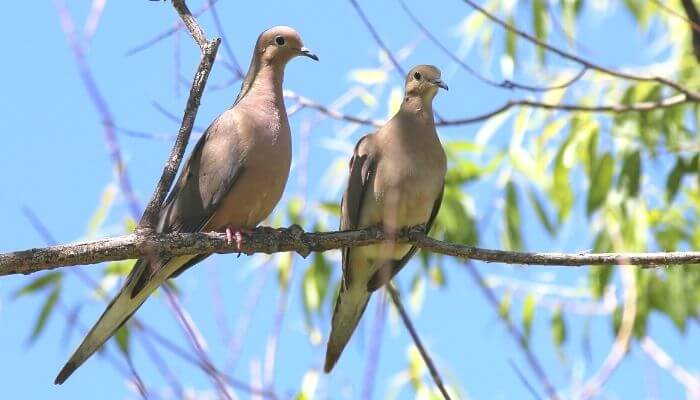
Do Mourning Doves Mate For Life Pigeonpedia

A Couple Of Mourning Doves Made A Visit To The Branches Of An Ailanthus Tree In My Courtyard And Got A Jumpstart On Valentines Da Mourning Dove Doves Mourning
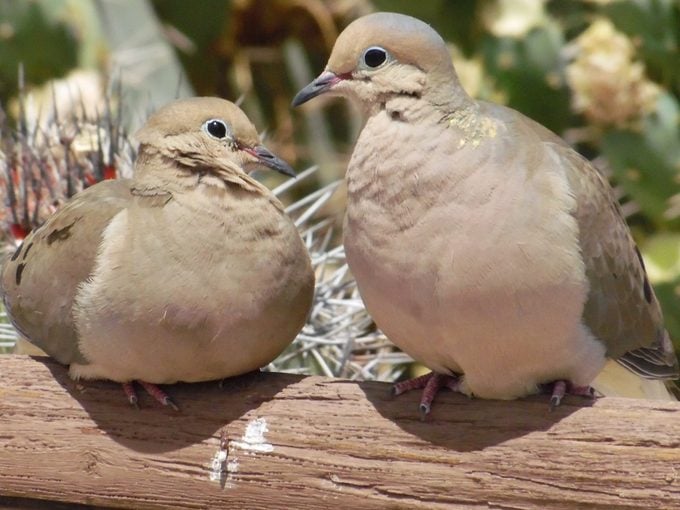
13 Fascinating Facts About Mourning Doves Birds Blooms

Why Are They Called Mourning Doves Pigeonpedia
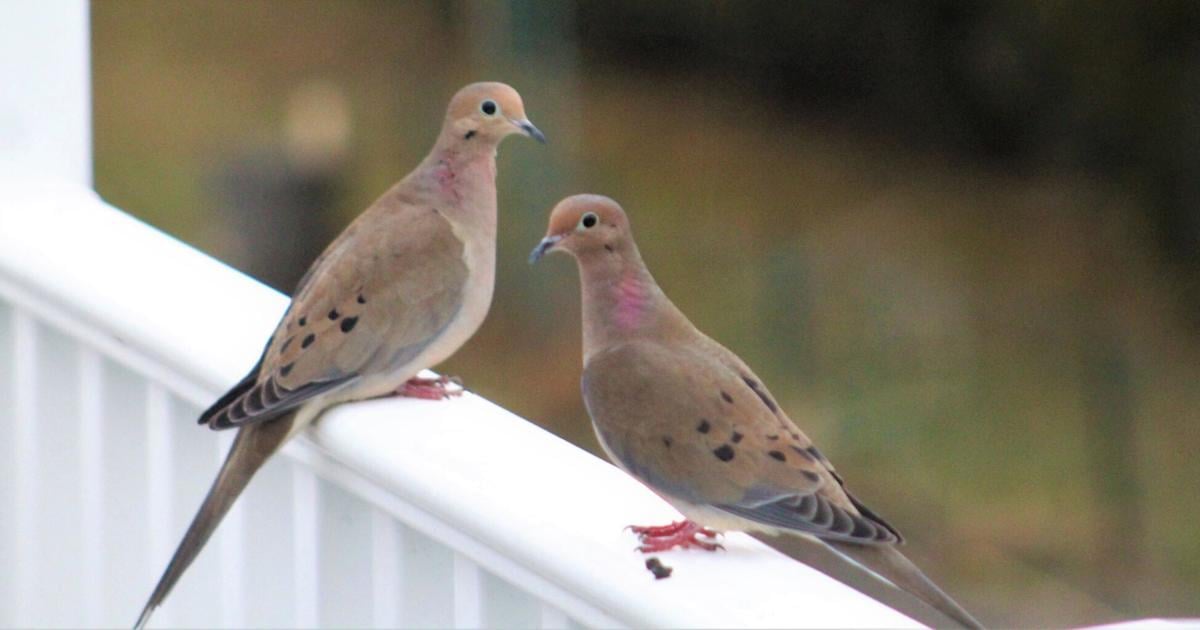
Mourning Doves Are Commonly Hunted In 41 States But Are Protected In Massachusetts Home Garden Berkshireeagle Com

Two Turtle Doves And The 117th Christmas Bird Count Animals Turtle Dove Animals Mating

Backyard Birds Beautiful Birds Wild Birds
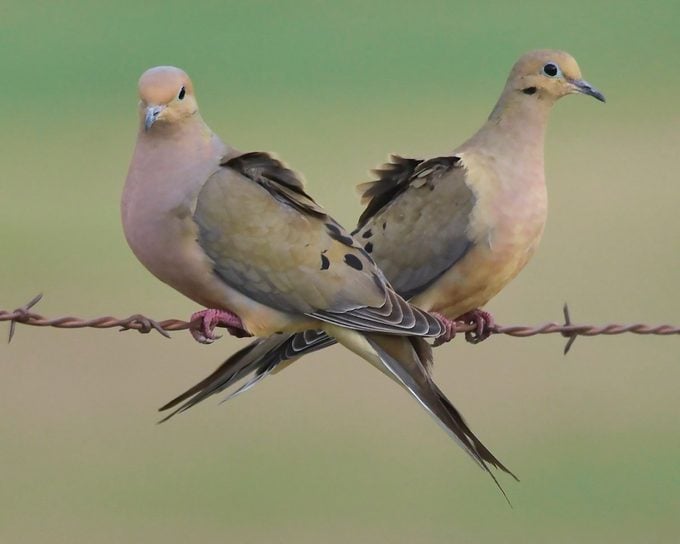
13 Fascinating Facts About Mourning Doves Birds Blooms

Pin On Bird Gallery By Bryan Carnathan

Morning Doves Mating The Beak Lock Continues By Bipul Haldar Beak Doves

Collared Doves Streptopelia Decaocto Pet Birds Backyard Birds Beautiful Birds

Two Turtledoves The Joy Of Mating Forever Turtle Dove Doves Turtle
